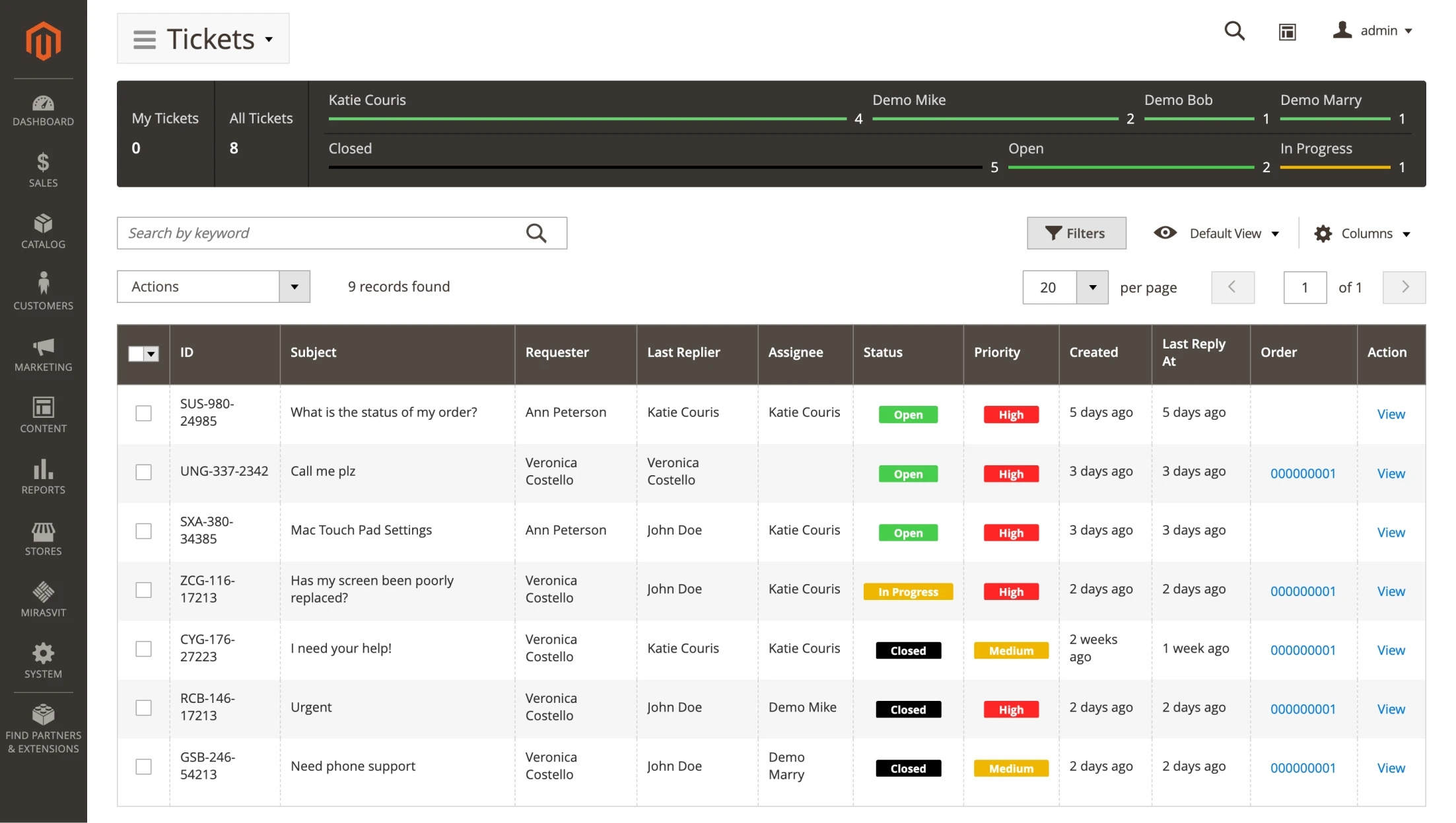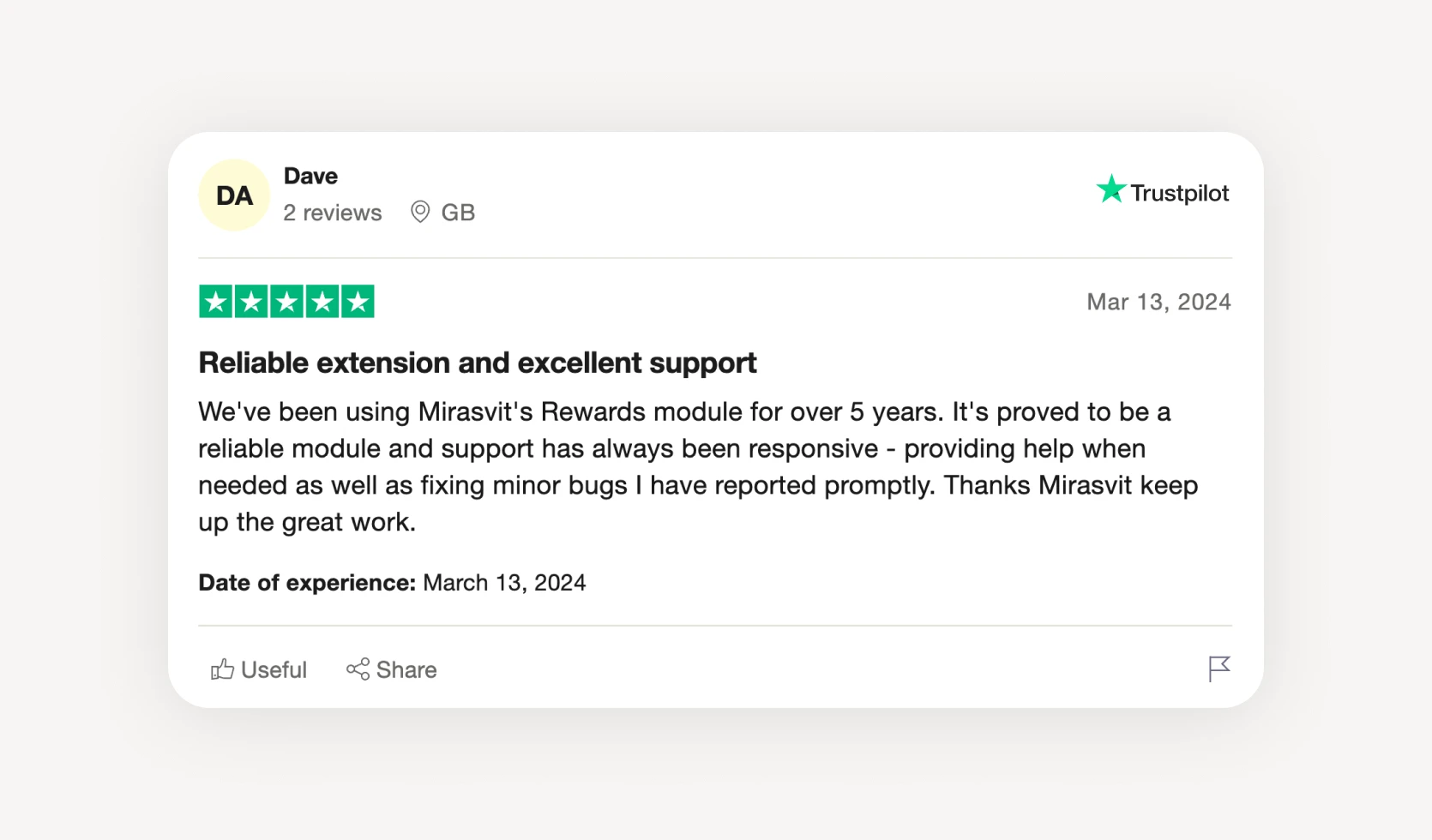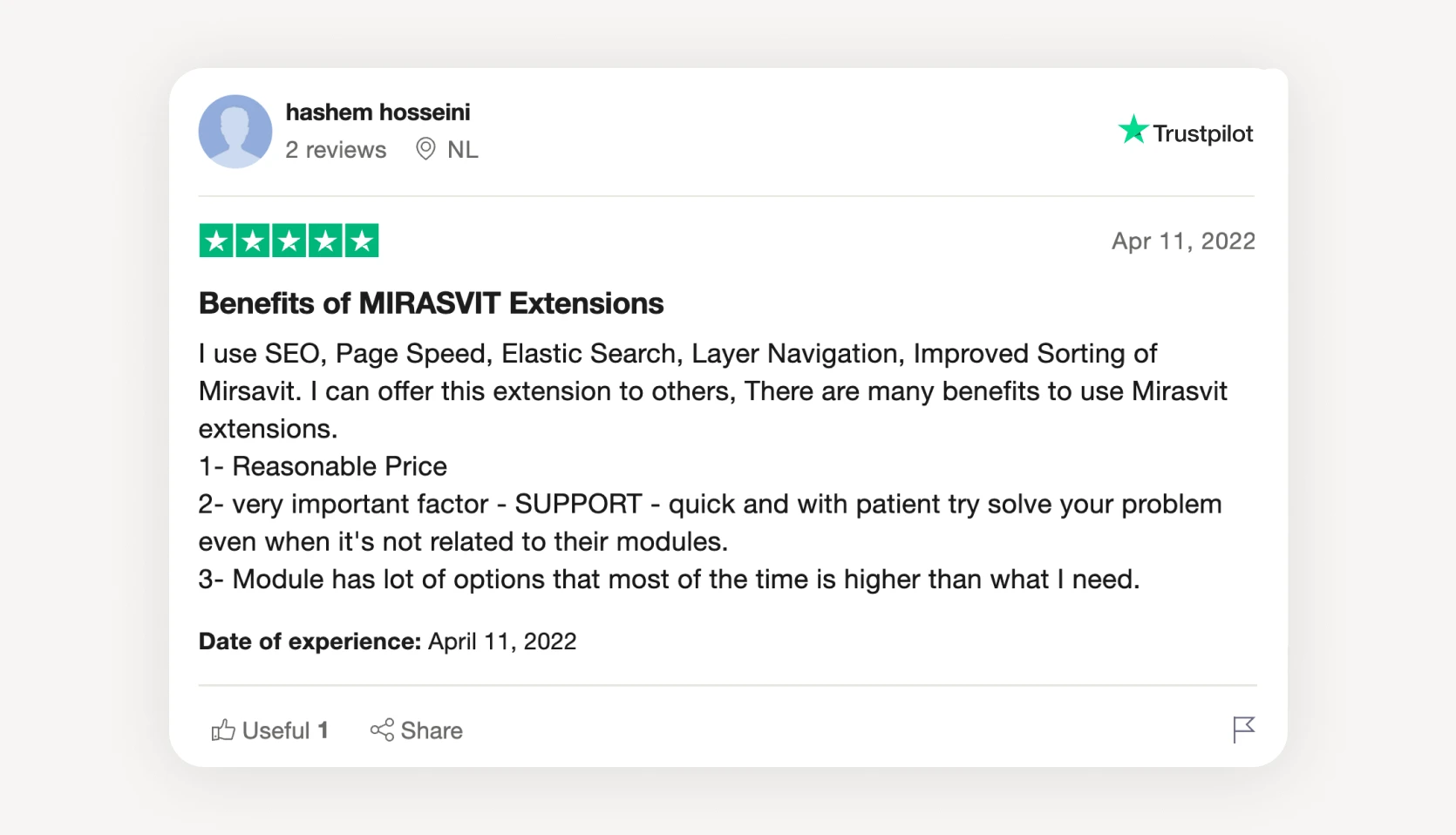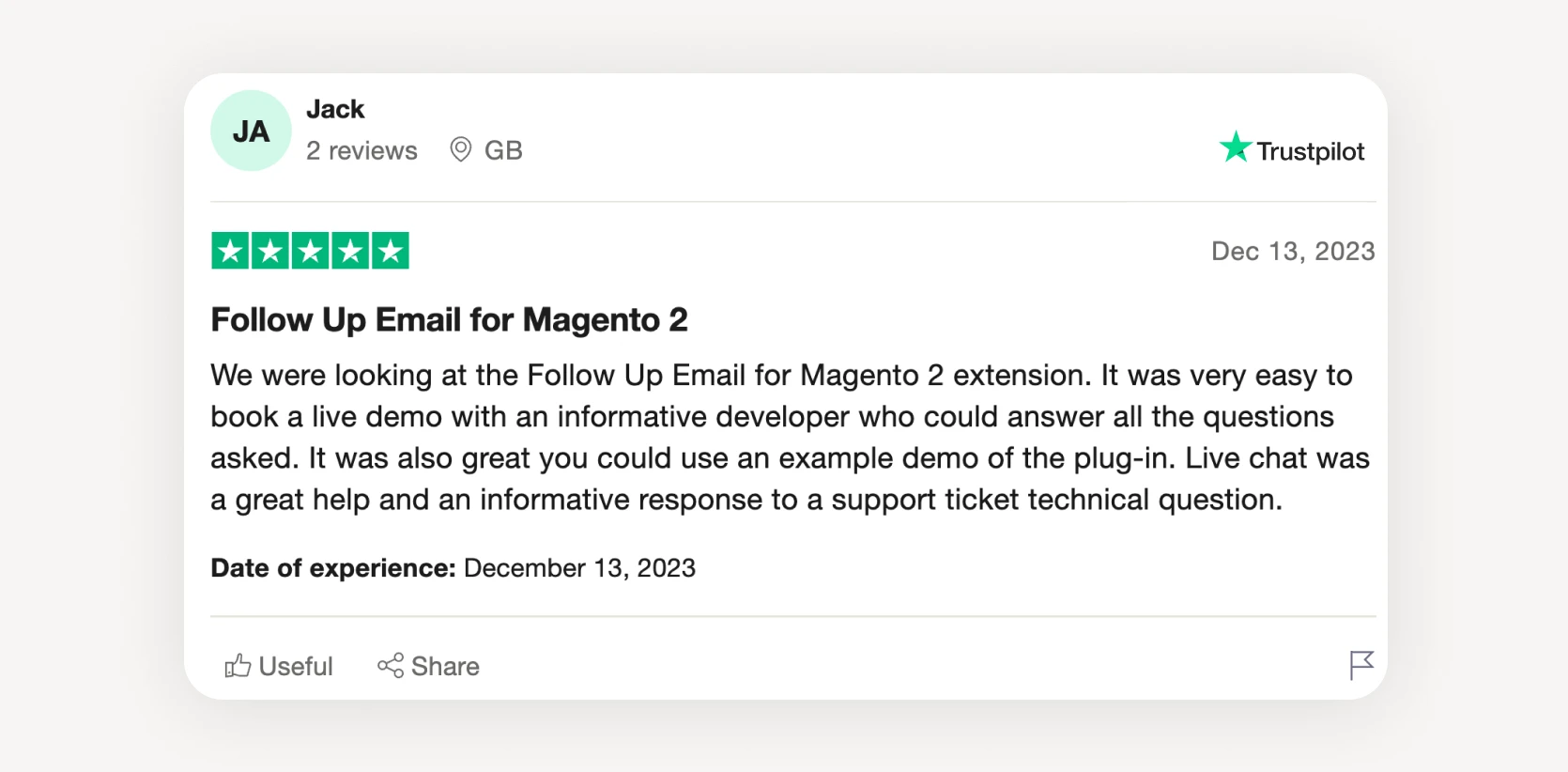Customer Support: Secrets to the Wow Effect and Client Loyalty
-
 Mariia Antoshkiv
Mariia Antoshkiv
- Our News & Updates
- 9 min read
In the fast-paced world of e-commerce, every interaction with a customer is an opportunity to leave a positive impression. Quality support has become essential for businesses to succeed in an ever-changing market.
Our team has developed a support system that not only solves problems but also builds an emotional connection with clients.
In this article, we'll share the best practices for organizing a support service based on our experience and provide practical recommendations to enhance the customer experience.
Table of contents
- How Our Support Service Works
- How to Build Your Dream Support Team
- Achieving Customer Satisfaction
- How to Create a "Wow" Effect and Exceed Expectations
- Conclusion
How Our Support Service Works
The support service is a dedicated department consisting of specialists who assist customers at every stage of their journey with our products and services.
These team members engage with clients from the very first inquiry, handling everything from pre-sale questions to ongoing support.
For example, a client might reach out via chat asking about the availability of a specific module. Support helps them choose the most suitable and cost-effective option. After purchasing, users need assistance with installation or configuration. The support team addresses all their questions, ensuring a positive experience and increasing the likelihood of repeat business.
The goals of the support service are to demonstrate the quality of our products, understand client needs, and effectively and enthusiastically help resolve their requests.

Our support structure has two levels:
- Level 1 (L1): Handles general inquiries and provides basic support. Team members at this level have minimal coding knowledge and manage initial client interactions.
- Level 2 (L2): Consists of developers who tackle more complex tasks, implement new features, and fix bugs. These specialists have deep technical expertise to solve intricate problems.
The process for handling requests is as follows:
- The client submits a ticket with a question or issue.
- The ticket is initially processed by Level 1 support.
- If the issue requires deeper technical intervention, it's escalated to Level 2.
For instance, an L1 team member might resolve a basic query but gather details for a feature request and pass them to an L2 developer. Sometimes, the L2 developer not only implements the requested feature but also suggests additional improvements to enhance the module's efficiency.

How to Build Your Dream Support Team
A key factor in a successful support service is having qualified and dedicated staff. We have low staff turnover due to careful selection and creation of comfortable working conditions.
Here are the main elements that help us build a team where employees feel valued, motivated, and achieve excellent results:
Prioritize Both Hard and Soft Skills
Our hiring process involves several stages to assess hard skills like logical thinking, problem-solving abilities, and technical knowledge.
However, soft skills are equally important. Since support involves working closely with people, communication skills, empathy, and a genuine desire to help are crucial. We look for team members who can clearly and understandably explain technical aspects to clients.
Find People Who Share Company Values
It's vital to select individuals whose values align with the company's. For us, key values include customer satisfaction and transparent, honest communication.
Occasionally, an employee may struggle to communicate effectively with clients due to differing views. For example, they might become irritated by questions or lack a sincere desire to help, performing their duties superficially.
In such cases, it's wise to either part ways or reassign their responsibilities so they can focus on technical tasks without direct client interaction. This approach preserves their professional skills while improving client relations.
When employees share the company's values, it fosters a comfortable work environment and effective collaboration, both internally and with clients.
Train Employees Competently and Comprehensively
An essential part of support work is staying informed about the latest market developments. This enables us to address client questions fully and even recommend solutions they might not be aware of.
The e-commerce world evolves rapidly, so keeping up-to-date is crucial.
Support and Motivate the Team
Motivation can be achieved through both material incentives (competitive salaries, bonuses) and non-material factors (flexible schedules and a positive team environment). Encouraging professional growth is also important.
Regular discussions about goals and plans help employees feel valued and recognize how they contribute not just to the company but also to clients' businesses. Sharing feedback is key to fostering this sense of significance.
Achieving Customer Satisfaction
While it may sound simple, the main principle of effective support is to ensure the customer is satisfied.
Happy accounts are more likely to make repeat purchases and recommend us to others. It also boosts team morale, as employees see the tangible impact of their work.
For instance: A client submits a ticket with an issue. We respond promptly and resolve it efficiently within an hour. The buyer is pleased, gives us high ratings in customer satisfaction surveys, recommends us, and leaves a positive review on social media.
They enjoy working with us and feel comfortable, so they purchase another module. In this way, our support service indirectly drives sales by ensuring customers are pleased with our quality.
How do we ensure customer delight?
→ Collect and Analyze Feedback
We thoroughly analyze all aspects of our support operations—from response times and initial reactions to client satisfaction levels and ratings across various platforms.
By consolidating this data, we identify patterns to understand what influences different customer experiences.
We use metrics like Customer Satisfaction (CSAT) and Net Promoter Score (NPS) to gauge our clients' happiness. Feedback is gathered through tickets, emails, social media, and other channels.
Every piece of feedback is reviewed and addressed. Positive comments show us what's working well, while negative ones highlight areas for improvement.
→ Handle Negative Feedback Constructively
Difficult situations and negative feedback are inevitable, especially if your support isn't available 24/7.
It's important to respond appropriately to avoid losing clients. We practice openness and transparency, honestly explaining any delays or issues and detailing how we're resolving their concerns.
For example, if a client submits a ticket outside of working hours—say, on a Sunday—we respond on Monday. While he might be unhappy about the delay, we couldn't reply sooner due to non-working hours.
In our response, we don't just say, "We've resolved your issue, please check."
Instead, we apologize for the delay, explain the situation honestly, and assure them of our commitment to timely support.
The outcome is the same, but the approach makes a significant difference. Clients appreciate honesty and promptness, which helps maintain their loyalty.
Sometimes, challenging customers require a team effort. It's important not to leave the support person to handle it alone but to assist collectively.
Finally, we strive not to take negative comments personally. While this can be challenging, we aim to objectively assess feedback, understand its origin, and address it collaboratively without placing blame.
→ Use Effective Communication Channels
Our primary communication channels with clients are tickets and emails.
We also utilize chat, phone calls, Slack, and social media. While these are less frequently used, we ensure all queries are addressed.
We had a case when a client reached out to us via LinkedIn. Instead of ignoring the message or redirecting them to submit a ticket, we created a ticket ourselves and promptly resolved their issue.
Our recommendation is to monitor all communication channels to ensure nothing is missed.
→ Show Genuine Interest and Curiosity
It's important for support staff not just to solve the issue but also to show interest and delve deeper into the problem.
Let’s imagine a buyer requests a new feature. A Level 1 support member doesn't just gather information but also asks additional questions like, "How will this feature help you? What tasks are you looking to accomplish with it?"
This helps us understand why the feature is important to the client and whether it could benefit other users, potentially adding it to our standard functionality later.
Such an approach shows the client that their input matters, increasing their satisfaction and loyalty. It also helps us improve our products by incorporating valuable features.
→ Balance Automation with a Human Touch
While automation can speed up customer service, maintaining a human connection is essential. Clients value personalized responses and the opportunity to interact with real people—something artificial intelligence can't replicate.
We suggest using templates for routine tasks but leaving room for individual solutions and empathy. For instance, we have email templates for access requests or explaining processes, which streamline communication without delaying issue resolution. However, these messages are always personalized by a team member and not sent automatically.
We also aim to reduce the need for automation by categorizing requests and analyzing data. If we notice recurring questions or issues, we proactively address them to prevent future inquiries.
Despite advances in technology like AI, the human element remains irreplaceable. Clients appreciate the individual attention and understanding that only a person can provide.
How to Create a "Wow" Effect and Exceed Expectations
We have a strategy that helps us receive a large number of positive reviews: creating a "wow" effect.
Everything we've discussed earlier contributes to this goal, and it's also about exceeding expectations.
How can this be achieved? The "wow" effect can be different for each client, so it needs to be discovered individually.
Let me share a couple of examples from our experience.
1. First and simplest, when a client reports something isn't working, describing it as a serious and complex bug, we resolve their issue on the same day. We prioritized their problem and promptly addressed it.

2. Also, we have cases when we fix issues that aren't directly related to us. Yes, we inform clients in advance that we don't modify third-party code and only fix issues related to our modules. However, sometimes it's unavoidable.
And we resolve it, of course, without additional costs. This approach often creates a "wow" effect.

3. Yet another example is when a buyer contacts support with a detailed request. They've prepared numerous screenshots, thoughtful questions, and clearly spent significant time preparing their inquiry.
We carefully reviewed all the provided materials, analyzed the screenshots, and instead of a standard short reply, we offered a detailed explanation with video instructions.
Clients appreciate when their important question, on which they've spent time, receives an equally thorough response.

Conclusion
Our experience shows that a high-quality support service is not just about solving customer problems—it's a vital tool for strengthening relationships, increasing loyalty, and driving business growth. To organize an effective support service:
- Define its structure, creating levels if necessary.
- Carefully select your team, focusing on both technical skills and alignment with company values and soft skills.
- Implement automation wisely, using tools like chatbots and CRM systems for frequent queries while maintaining personalized support for complex situations.
- Regularly collect and analyze feedback to improve processes and service quality.
- Focus on customer satisfaction, aiming not just to resolve issues but to exceed expectations and leave a lasting positive impression.
Avoid seeking a perfect solution that will instantly fix all problems. It's more effective to take small, consistent steps toward significant goals, continually seeking improvement and new ways to enhance service quality. Even when things are going well, keep striving for growth: increase your efforts, explore new development areas, and implement modern technologies, all while balancing innovation with a personal touch.
Organizing a structured and efficient support service will become a significant competitive advantage for your company, helping you retain existing clients and attract new ones through positive reviews and recommendations.
Provide your online store customers with outstanding support. Collect and process all inquiries, emails, and offline chats in one place! No piece of information will be lost. Every message will be assigned to the right department and an appointed agent.
This must-have extension allows your online store to comply with the most common GDPR (General Data Protection) & CCPA (California Consumer Privacy Act) regulations and guidelines for user data protection, CNIL and LGPD standards. Our GDPR module for Magento 2 is enriched with features to ensure the security of customer data, increase trust and transparency in data processing, and make your online business compliant with the law.
Backend Search for Magento 2 offers a new way to navigate within the admin panel using an ultra-fast search feature.
To find something in the admin panel, you typically have to use grid filters, which are very slow. Our solution returns results within milliseconds.
It can find almost every type of content available within your Magento admin, including orders, customers, pages, invoices, products, shipments, menu items, etc.
Search for customers by email, search for orders by address or purchased item, or find all orders of a customer – no problem. Blink, and we’ll bring the results.



